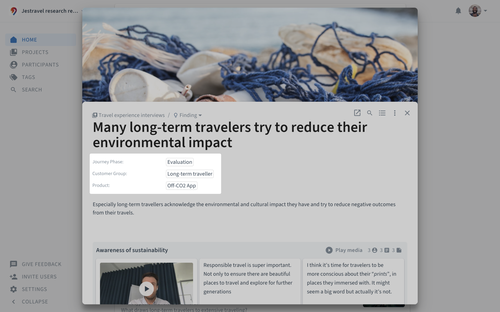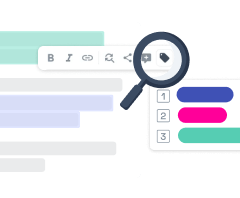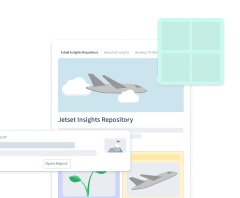Artifact information fields
Artifact information is metadata added to Artifacts (like research reports, atomic findings, or affinity maps) to keep them organized and findable. You can think of it as a powerful way to structure and label published Artifacts so that they become findable across projects.
For example, you can add all business lines and products for which a certain artifact contains relevant information as structured artifact information. Product Managers who want to learn about existing research findings of a certain product can filter all artifacts for that exact product and will see all relevant and published research results ready to be explored.
Using artifact information
Artifact information allows you to sort and filter artifacts in several places in Condens the Insights Magazine (dedicated stakeholder repository) or in the area of any Project.
Setting up artifact information fields
Admins can see and change the available Artifact types and information fields via the Workspace tab in the . As an admin, open an existing Artifact Type and click on to define custom fields. Artifact information fields can be created using one of the following options:
Text
Categories (Single select, or Multi-Select)
Number
Checkbox
Date
Email
URL
Participant
User
NPS
Artifact information fields can be added per Artifact type in your workspace. If you use the exact same artifact information field across Artifact types, they'll be matched to the same field when filtering for Artifact information.
Adding structured information to artifacts
When creating a new Artifact, you'll see the available information fields and can enter the corresponding information for an Artifact directly beyond the title.

Please note: Only admins can define if and which Artifact information fields are used for Artifacts (see chapter above).
Global Tags vs. Artifact Information
Besides Artifact information, there are multiple ways to structure research data from raw material to highlights and finalized reports in Condens. Artifact information helps you to structure published research results in the repository for everyone who has access to Artifacts, including stakeholders browsing their dedicated interface, the Insights Magazine.
By contrast, tags help you structure research data and prepare raw material like notes, transcripts, images, and videos for further analysis. The taxonomy (the set of tags used in the repository) is a tool for researchers to group all research highlights and therefore is available for everyone who has access to the full repository including all raw data and highlights.




